計算科学研究センター(CCS)に所属する教員・研究員の研究をわかりやすく紹介する「研究者に聞く− 研究トピックス」に「Vol.12 より確からしい天気予報を目指して」を公開しました。
地球環境研究部門の松枝助教の研究を紹介しています。
計算科学研究センター(CCS)に所属する教員・研究員の研究をわかりやすく紹介する「研究者に聞く− 研究トピックス」に「Vol.12 より確からしい天気予報を目指して」を公開しました。
地球環境研究部門の松枝助教の研究を紹介しています。
松枝 未遠 助教 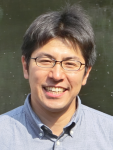
地球環境研究部門
松枝先生は、地球環境研究部門の研究者です。博士後期課程の学生のとき、筑波大学と気象庁数値予報課の共同研究の主力メンバーに抜擢されたことをきっかけに、アンサンブル予報の研究を始めたそうです。現在は、アンサンブル予報データの予測・応用可能性について研究されています。また、世界中の研究者が利用するデータベース『準リアルタイムアンサンブル予報プロダクト ウェブサイト(TIGGE / S2S / Copernicus Museum)』の運営にも熱心に取り組まれています。
(2023.09.20 公開)
数値予報とは、コンピュータを用いて地球大気の数値シミュレーションを行い、ある時点の大気状態から未来の大気状態を予測することです。ある時刻における地球上のあらゆる場所の気象要素(気圧、気温、湿度、風などの物理量)を初期値として与え、コンピュータ上で天気予報の方程式を解くことで仮想的に地球大気を再現します。ところが、この初期値には観測値が利用されるため、必ず誤差が含まれてしまいます。例えば、気温、湿度、風というのは日当たりや風通しによって時々刻々と変化するため、世界中どこでも均質に観測することはほぼ不可能です。この不均質な観測が、初期値の誤差の原因のひとつになり得るのです。数値予報では、初期値に含まれる僅かな誤差が計算を何度も繰り返すうちに増大し、予測の誤差が生じます(これを「大気のカオス性」と呼びます)。
予測の誤差を見積もるには、どうすればよいでしょうか? そのひとつとして「アンサンブル予報」と呼ばれる方法があります。アンサンブル予報では、観測値に手を加えることで少しずつ異なる初期値をたくさん用意して、一度に複数の予報を行います。アンサンブル予報の個々の予報のばらつきから予報の確からしさを見積もったり、確率予報を行うことができます。
図1:気象庁のアンサンブル予報による台風進路。左は台風10号(DAMREY)、右は台風9号(SAOLA)に関する予報で、ともに2023年8月25日12UTCを初期時刻とする。左の例では複数の予報の線がよくまとまっており、予報の確度が高い。右の例では予報の線がばらついており、予報の確度が低い。
台風の進路予報は、アンサンブル予報の例としてよく取り上げられます。まずは、以下のリンクから松枝先生の運用されているウェブサイトを覗いてみましょう。
http://gpvjma.ccs.hpcc.jp/TIGGE/tigge_TC.html
このウェブサイトでは、2008年7月以降の日本周辺の台風進路予報と実況進路を見ることができます。例えば、2023年8月に沖縄本島を二度にわたり襲った台風6号(KHANUN)の予報を見たい場合には、
Year(年):2023
Tropical cyclone name(台風名):KHANUN
Initial time of forecast(予報初期時刻):2023072812
と順に選択します。すると、2023年7月28日12UTC(協定世界時)を初期時刻とする各国の予報進路(色線)と実際の進路(黒線)が現れます。この時点では、台風6号は中国大陸に向かうとされていました(図2)。色線がよくまとまっており、予報は確からしいと誰もが思うほどでした。
しかし、新しい予報が出るごとに予想進路は徐々に変化していきます(Initial time of forecastを順に進めて確認してみてください)。7月31日12UTCを初期時刻とする予報(図3)では、先ほどよりも色線のばらつきが大きくなっています。これは、まだ確実とは言えないけれど、一度、沖縄を通過した台風が戻ってきて再上陸する可能性が出てきた、ということを示しています。結果的にはこの予報が実際の進路と一致しました。
このように、初期時刻や国によって予報結果は異なります。事前にどの予報が当たるか分かればよいのですが、残念ながら分かりません。だからこそ、起こりうる複数のシナリオを事前に把握し、予報の確からしさを調べることで対策に役立てます。
ところで、このウェブサイトはもともと、アンサンブル予報に携わる世界中の研究者のためのデータベースとして松枝先生が立ち上げたものです。研究者にとって、過去の予報データはまさに“宝の山”。誰もがアクセスできるよう整備することで、気象予報の研究の活性化に貢献しています。こうして得られた研究成果が反映されることで、天気予報が改善されていくのですね!
【ウェブサイト利用時の注意点】
研究・教育目的のみ使用可。最新の台風の予報進路が掲載されているわけではないので、実際の防災や避難等の参考にはしないでください(気象庁や民間気象会社の最新の台風情報をご利用ください)。
図2:2023年7月28日12UTCを初期時刻とする各国気象庁のアンサンブル予報による台風進路(a:カナダ気象センター、b:欧州中期予報センター、c:気象庁、d:米国環境予測センター、e:英国気象局)。
図3:2023年7月31日12UTCを初期時刻とする各国気象庁のアンサンブル予報による台風進路(a:カナダ気象センター、b:欧州中期予報センター、c:気象庁、d:米国環境予測センター、e:英国気象局)。
(文・広報サポーター 松山理歩)
2023年9月20日
大阪医科薬科大学
大阪大学
量子科学技術研究開発機構
筑波大学
茨城大学
理化学研究所
J-PARCセンター
総合科学研究機構 中性子科学センター
茨城県
研究のポイント
概要
大阪医科薬科大学、大阪大学、量子科学技術研究開発機構、筑波大学、茨城大学、理化学研究所らの研究グループは、大強度陽子加速器施設(J-PARC)※1内に設置された、物質・生命科学実験施設(MLF)の茨城県生命物質構造解析装置(iBIX) ※2を用いた実験により、銅アミン酸化酵素の触媒反応途上に形成されるセミキノンラジカル中間体の中性子結晶構造解析※3に成功しました。これはラジカルタンパク質として初めての成果であり、活性中心の水素原子の位置を明らかにすることにより、酵素タンパク質内でラジカル中間体が安定に存在できる仕組みの一端を解明しました。同時に活性中心にアミン基質が結合していることも発見し、この基質が、補酵素の構造変化を助けるために反応途中で生成物と入れ替わったものであることを明らかにしました。本研究は、酵素を効率的に働かせるために仕込まれている”手品のタネ”を明かしたといえます。
今回の研究は酵素の精緻な反応メカニズムの一端を原子レベルで明らかにしたものであり、またこれにより、ラジカルを反応中間体とする各種の有用酵素の開発にも大きな進展をもたらすことも期待されます。
本研究成果は、米国科学誌「ACS Catalysis」に、9月7日(木)19時(日本時間)に公開されました。
| 主催 | 筑波大学 計算科学研究センター |
| 日時 | 2023年10月2日(月)、3日(火) 14:00~17:00 |
| 会場 | つくば国際会議場 中ホール300 (オンライン配信あり *オンラインからの質疑を受け付ける予定はありません) |
| 懇親会 | 10月3日(火)18:00〜 ホテルグランド東雲 |
| 参加費 | シンポジウム 参加無料、懇親会 7,000円 |
| 参加登録 | 事前登録 (2023年9月22日締切) |
| 問い合わせ | シンポジウム問い合わせ窓口 ccssympo2023[at]ccs.tsukuba.ac.jp スパム防止のためアットマークを[at]と表示しています。 送信の際は[at]はアットマークに置き換えていただくようお願いいたします。 |
* 本シンポジウムは全て英語で行います。
プログラムおよび詳細については、こちらの英語ページをご覧ください。
https://www.ccs.tsukuba.ac.jp/sympo20231002en/
Date and Venue / Program / Registration
Today, computational science is an indispensable research methodology in the basic and applied sciences and contributes significantly to the progress of a wide variety of scientific research fields. For multidisciplinary computational science based on the fusion of computational and computer sciences, frequent/regular opportunities for communication and collaboration are essential. The Center for Computational Sciences (CCS) at the University of Tsukuba aims to improve such collaborations between different research fields. In this symposium, plenary speakers in various fields of computational sciences will give us talks on research frontiers, comprehensible to researchers and graduate students in other fields. In 2010, the CCS was recognized under the Advanced Interdisciplinary Computational Science Collaboration Initiative (AISCI) by MEXT, and has since provided the use of its computational facilities to researchers nationwide as part of the Multidisciplinary Cooperative Research Program (MCRP).
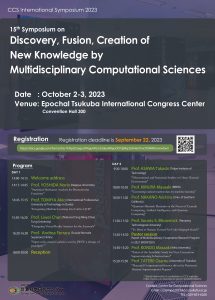 Dates: 2 Oct. [Mon] 14:00 - 3 Oct. [Tue] 17:00
Dates: 2 Oct. [Mon] 14:00 - 3 Oct. [Tue] 17:00
Venue: Epochal Tsukuba International Congress Center “Hall 300”
*Zoom streaming will also be available, but no questions will be accepted online.
| Oct. 2 (mon) | |||
| 14:00 – 14:15 | Welcome address | SHIGETA Yasuteru | University of Tsukuba (Vice President and Executive Director for Research) |
| Welcome address | BOKU Taisuke | University of Tsukuba | |
| 14:15 – 14:45 | Statistical Mechanics Analysis for Biomolecular Functions | YOSHIDA Norio | Nagoya University |
| 14:45 – 15:15 | Integrating Machine Learning into Lattice QCD | TOMIYA Akio | International Professional University of Technology in Osaka |
| 15:15 – 15:50 | Break | ||
| 15:50 – 16:20 | Designing Virtual Reality Systems for the Externals | Liwei Chan | National Yang Ming Chiao Tung University |
| 16:20 – 16:50 | Super-early, massive galaxies seen by JWST: a change of paradigm? (online) | Andrea Ferrara | Scuola Normale Superiore |
| 16:50 – 17:00 | Group photo | ||
| 18:00 – 20:00 | Reception |
| Oct.3 (Tue) | |||
| 9:30 – 10:00 | Observational and Numerical Studies on Urban Thermal Envrionment | ASAWA Takashi | Tokyo Institute of Technology |
| 10:00 – 10:30 | Generating nuclear reaction data by machine learning | KIMURA Masaaki | RIKEN |
| 10:30 – 10:50 | Break | ||
| 10:50 – 11:20 | Quantum Materials Dynamics at the Nexus of Exascale Computing, Artificial Intelligence, and Quantum Computing | Aiichiro Nakano | Univ. of Southern California |
| 11:20 – 11:50 | To Draw is Human: Toward No-Code Subgraph Search | Sourav S. Bhowmick | Nanyang Technological University |
| 11:50 – 13:20 | Lunch Break | ||
| 13:20 – 14:50 | Poster Session | ||
| 14:50 – 15:20 | Status of the Feasibility Study for Next-Generation Supercomputing Infrastructures | KONDO Masaaki | Keio University / RIKEN R-CCS |
| 15:20 – 15:50 | Data and Computational Science driven by Persistent Memory Supercomputer Pegasus | TATEBE Osamu | University of Tsukuba |
The registration form is closed. (Registration is free, and the reception fee will be 7,000 JPY. )
On-site registration is available.
AMAGASA Toshiyuki
Doan Quang Van
HARADA Ryuhei
INAGAKI Yuji
KAMEDA Yoshinari
KURAMASHI Yoshinobu
NAKATSUKASA Takashi
NUKADA Akira
OHNO Hiroshi
SATO A. Shunsuke
YAJIMA Hidenobu
Advisory member:
BOKU Taisuke
NAKATSUKASA Takashi
Contact: ccssympo2023[at]ccs.tsukuba.ac.jp
計算科学を支える大規模シミュレーション,超高速数値処理のためのスーパーコンピュータの主力プラットフォームはクラスタ型の並列計算機となってきました.ところが,大規模なクラスタ型並列計算機は,高い理論ピーク性能を示す一方で,実際のアプリケーションを高速に実行することは容易なことではありません.
本セミナーはそのようなクラスタ型並列計算機の高い性能を十二分に活用するために必要な知識,プログラミングを学ぶことを目的としています.超高速数値処理を必要とする大学院生が主な対象ですが,興味をお持ちの方はどなたでもご参加下さい.
| 日程: | 2023年9月5日 (火) – 9月6日 (水) |
|---|---|
| 会場: | 筑波大学計算科学研究センター(アクセス) |
| 9月5日 (火):1階 ワークショップ室 | |
| 9月6日 (水):1階 会議室A |
| 参加申込: | 参加申込を締め切りました。 |
|---|---|
| 締め切り: | 2023年9月3日 (日) |
| 定員: | 40名程度 |
| 参加費: | 無料 |
| 問い合わせ先: | hpc-seminar [at] ccs.tsukuba.ac.jp |
会場の都合により,参加定員を超えた場合,参加申込を早期に締め切らせて頂く場合があります.
| 9月5日(火) | 9月6日 (水) | |
| 09:00 – 10:30 | 並列処理の基礎 | 並列数値アルゴリズムI |
| 10:45 – 12:15 | 並列システム | 並列数値アルゴリズムII |
| 13:30 – 15:00 | OpenMP | 最適化I |
| 15:15 – 16:45 | MPI | 最適化II |
| セミナー名 | セミナー内容 | 講師 | |
|---|---|---|---|
| 1 | 並列処理の基礎 | アムダールの法則,並列化手法(EP,データ並列,パイプライン並列),通信,同期,並列化効率,負荷バランスなど並列処理に関する基礎事項を学ぶ. | 朴 泰祐 |
| 2 | 並列システム | SMP,NUMA,クラスタ,グリッドなどの並列計算機システムと,並列計算機システムの性能に大きく関わる事項(メモリ階層,メモリバンド幅,ネットワーク,通信バンド幅,遅延など)を学ぶ. | 小林 諒平 |
| 3 | OpenMP | 並列プログラミングモデル,並列プログラミング言語OpenMPを学ぶ. | 額田 彰 |
| 4 | MPI | 標準メッセージパッシングインターフェースMPIによる並列プログラミングを学ぶ. | 藤田 典久 |
| 5 | 並列数値アルゴリズムI | 代表的な並列数値アルゴリズムである連立一次方程式の解法を学ぶ. | 多田野 寛人 |
| 6 | 並列数値アルゴリズムII | 代表的な並列数値アルゴリズムである高速フーリエ変換(FFT)を学ぶ. | 高橋 大介 |
| 7 | 最適化I | 並列計算機システムの計算ノード単体におけるプログラムの最適化手法(レジスタブロック,キャッシュブロック,メモリ割当など)と性能評価に関して学ぶ. | 高橋 大介 |
| 8 | 最適化II | 並列計算機システム全体における並列プログラムの最適化手法と性能評価に関して学ぶ. | 建部 修見 |
本セミナーは,筑波大学理工情報生命学術院共通専門基盤科目「計算科学のための高性能並列計算技術」と共通です. 本セミナーを授業として受講する方は,TWINS で履修登録して下さい.このページからの参加申し込みは不要です.
2023年7月27日
筑波大学 計算科学研究センター
日本海に近い北陸地方は、一般的に豪雪地帯であるが、日本海側最大の都市である新潟市は、近隣の都市に比べて降雪量が少ない。その理由として、新潟市の風上に位置する佐渡島が降雪量を減らすという雪陰(注1 効果がある。これは、気象予報士や住民の間で「佐渡ブロック」(注2 と呼ばれ広く信じられているが、その真偽やメカニズムは十分に調査されてこなかった。
本研究では、長期間のレーダーデータの統計解析と典型12事例を対象とした数値実験により、新潟市の降雪に対する佐渡島の雪陰効果の存在とそのメカニズムを明らかにした。その結果、佐渡ブロックは確かに存在し、そのメカニズムは、(1)佐渡島が降雪をもたらすことで、その風下海上の水蒸気・雲水などを減少させる、(2)佐渡島が風下の風速を弱めることで、風下海上から大気への熱と水蒸気の輸送量を減少させる、ことが分かった。
はじめに、2005–2014年の冬(12月~2月)のレーダーデータを統計解析した。その結果、強い接近風が佐渡島に到達した188例中151例(80%)で、新潟平野における雪陰効果が発生していたことが分かった。この雪陰の発生位置は常に佐渡島の風下で、風向きに依存していた。すなわち、北西風の時は新潟平野の中でも佐渡の南東に位置する地域で、西風の時は佐渡の東に位置する地域で特に降雪量が少ない傾向が認められた。
次に、典型的な12事例を対象に、気象モデルを用いた数値実験を行った。その結果、気象モデル内で佐渡島がある時の実験の場合、モデル内に佐渡島がない時の実験よりも、新潟平野で降雪量が少ないことが確認された(図1)。
さらに、佐渡島を風上方向(北西方向)に200km移動させた実験を行った結果、佐渡島の雪陰効果は、佐渡島の風下150kmまで現れることが分かった。最後に、佐渡島を北東方向に150km(庄内平野沖に)移動させた実験を行った。その結果、新潟平野の降雪量は、他の平野の降雪量と同程度になった。
数値実験の結果をさらに解析した結果、佐渡島は風下の風を弱めることで風下海面から大気への熱と水蒸気の輸送量を減少させることがわかった。同時に、風下の水平風の収束も弱めることも分かった。また、佐渡島で雪が多く降ることで、風下海上の水蒸気、雲水、雲氷の量を減少させることも明らかとなった。これらの結果、佐渡島は風下海上の雲列の再発達を弱め、新潟市を含む風下平野の降雪を減少させることができると結論づけられた。
今回は季節風が佐渡島に吹き付ける事例を対象に調査した。季節風が弱い場合の佐渡島の雪陰効果や、将来の新潟平野の降雪量に対する佐渡島の雪陰効果などが今後の課題としてあげられる。
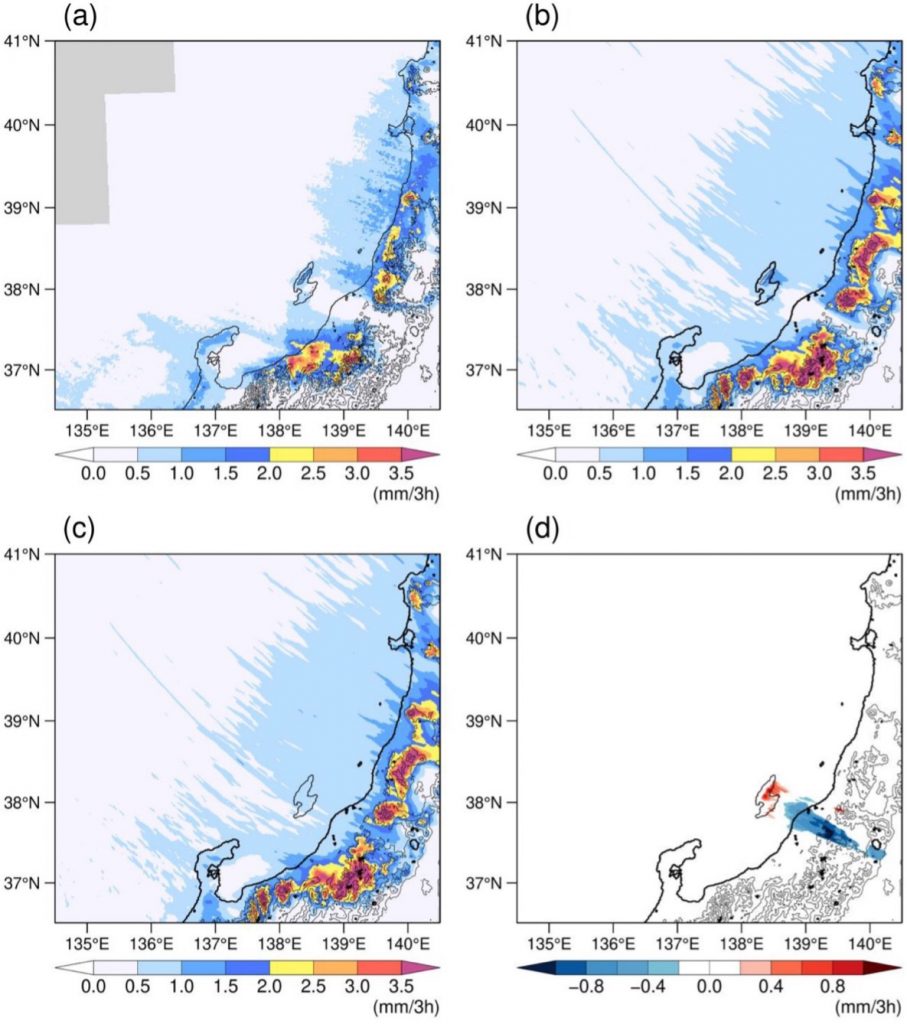
用語解説
研究資金
環境省・(独)環境再生保全機構「環境研究総合推進費」 JPMEERF20232003
掲載論文
題名:The snow-shadow effect of Sado Island on Niigata City and the coastal plain
著者名:Hiroyuki Kusaka, Nobuyasu Suzuki, Masato Yabe, Hiroki Kobayashi
掲載誌:Atmospheric Science Letters
掲載日:2023年7月20日(ウェブ版)
DOI: https://rmets.onlinelibrary.wiley.com/doi/10.1002/asl.1182
生命科学研究部門・生命機能情報グループの原田准教授、Hengphasatporn助教、重田教授等の論文が、日本化学会・欧文誌 Bulletin of the Chemical Society of Japan の優秀論文に選出されました。
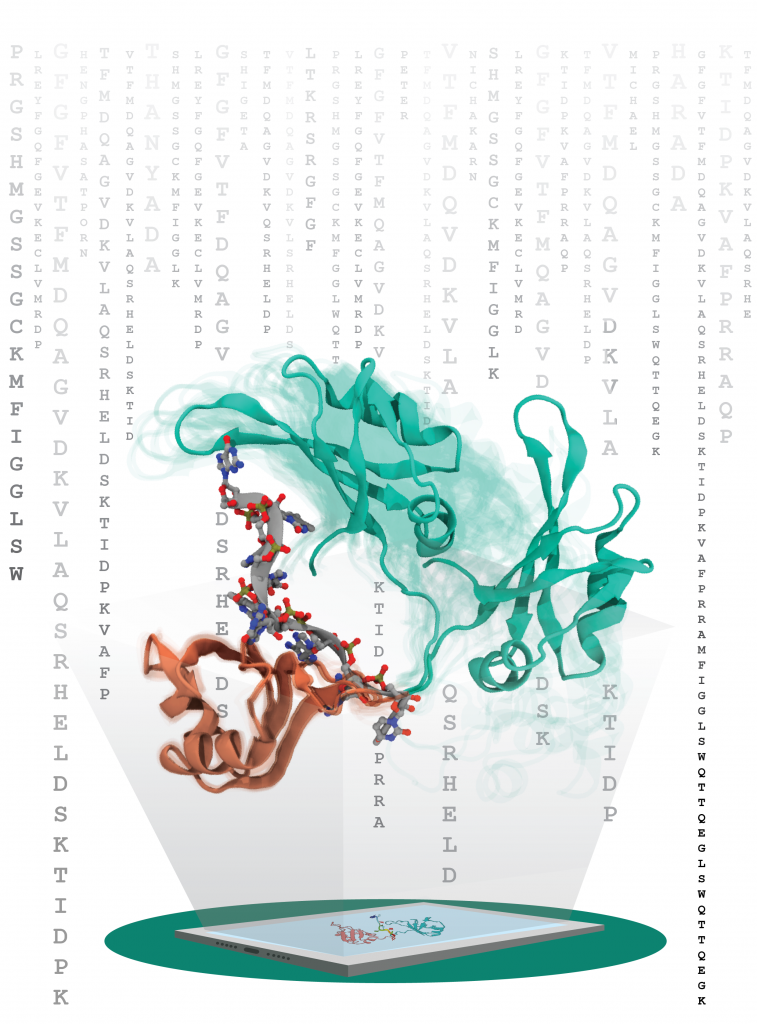
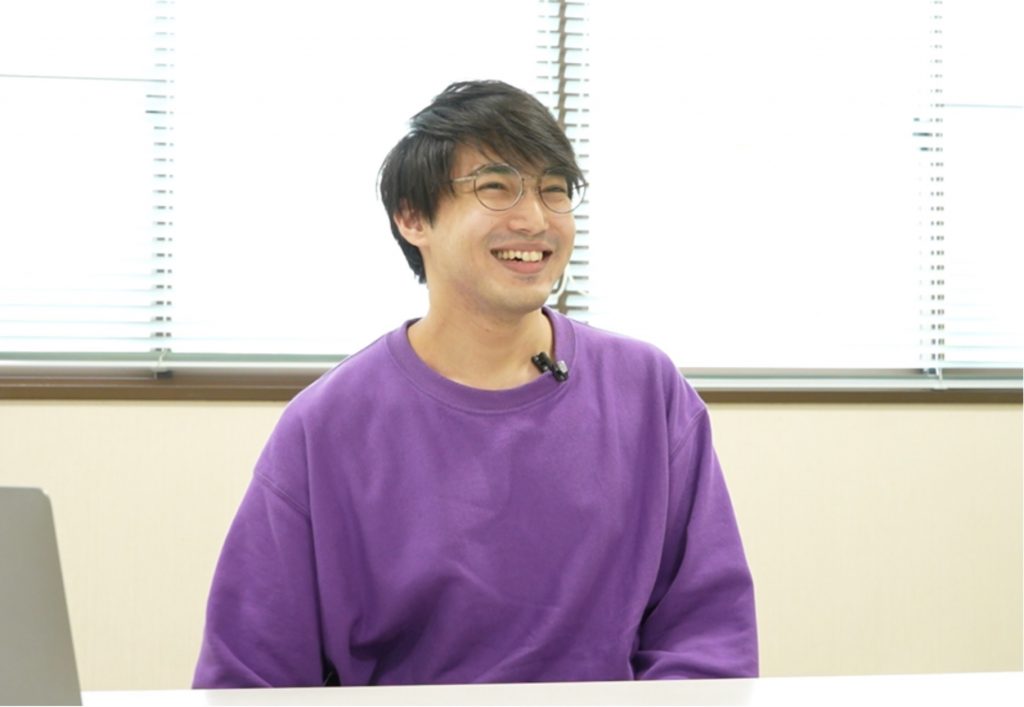
セレスタ プラギャン(Pragyan SHERESTHA)さん
筑波大学 システム情報工学研究群 エンパワーメント情報学プログラム
画像情報研究室 博士前期課程2年
(内容は、2022年7月取材当時のものです。)
セレスタさんは、筑波大学 工学システム学類在籍時に画像情報研究室に入り、北原格 教授の指導のもとで研究を続けています。
どんな研究をしているの?
エックス線レントゲン画像から骨の3次元モデルを復元する研究を行っています。普通のカメラで撮影した画像からの3次元復元の技術は、最近では身近になってきています。ところが、その技術がエックス線画像には通用しません。エックス線画像からの3次元復元ができない理由としては、別々の画像上で同じ場所の対応をつけるのが難しいという問題があります。そこの部分にチャレンジしようと思って、この研究を始めました。
今の研究室に進んだ理由
画像情報研究室はコンピュータービジョンと画像処理技術を使った応用的な研究を行なっているところで、自分もそういった技術の応用の部分を研究したいと思っていて、研究テーマが一致したので選びました。
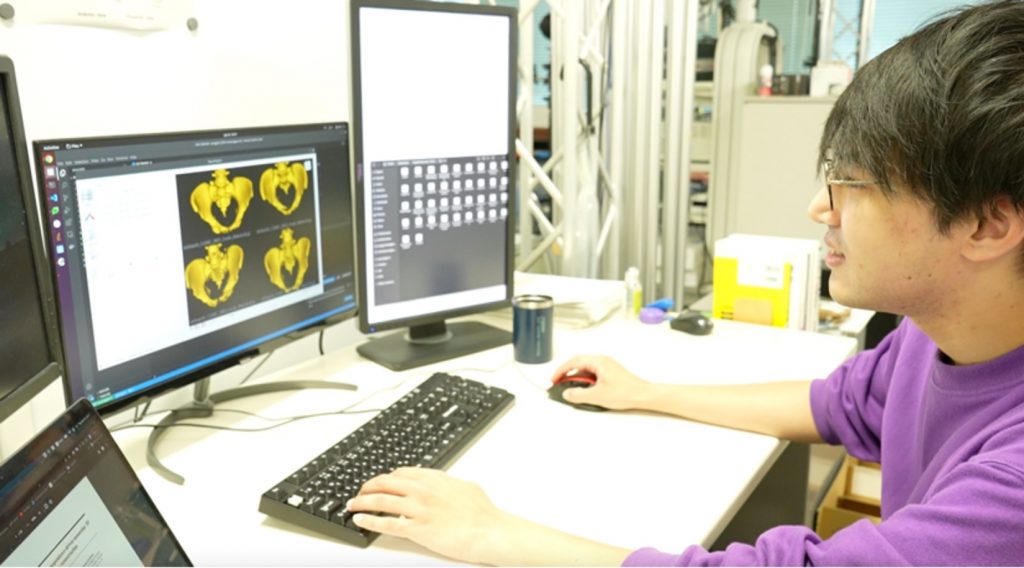
研究をすること、ここが魅力!
深層学習を用いて研究をしているので、さまざまな深層学習のモデルや学習アルゴリズムを組んだりするんですけれども、それがうまくいった時には凄い喜びがあります。
また、他の人がどのような研究をしているのか、関連研究や先行研究の調査を行なっている時に、色々なアプローチが見られて感動したり、新しい発見があったりすると楽しいです。
メッセージ
大学は色々な人がいて、色々な授業があって、色々な団体がいて、そして色々な先生がいらっしゃるので、すごく選択肢が豊富なところです。自分の身を置く環境が変わると、自分の考え方とか興味も変わってくると思うので、何かを選ぶ時には慎重になって選んだ方がいいのかなと思います。
↓ インタビュー動画もあります。
2023年7月11日
国立大学法人筑波大学
高知県公立大学法人高知工科大学
国立大学法人東京農工大学
カーボンニュートラル社会の実現と持続には、水素関連技術の開発が欠かせません。水素は水の電気分解で得られますが、現在用いられている触媒には希少で高価な貴金属が使われています。我々は、埋蔵資源量が豊富で安価なホウ素と硫黄を使った新しい高活性水電解触媒を開発しました。
温室効果ガスの排出量と吸収量が均衡したカーボンニュートラル社会の実現のためには、化石燃料の利用率の低減だけでなく、太陽光発電や風力発電などで生成した再生可能エネルギーを効率よく利用しなければなりません。また、再生可能エネルギーを利用して水を電気分解(水電解)して得られる水素(グリーン水素)の活用も、環境負荷を低減する上で重要です。水電解を効率よく行うために、酸素発生反応を促進する電極触媒が用いられます。現在は、ルテニウムやイリジウムのような希少で高価な貴金属が電極触媒に使用されていますが、我々の社会を持続的に発展させていくためには、より埋蔵資源量が豊富で安価な元素を利用した、新しい電極触媒材料の開発が不可欠です。
これまでに本研究グループは、このような新しい電極触媒材料となる可能性のある物質として、埋蔵資源量が豊富なホウ素と硫黄が1:1の組成比で構成される菱面体硫化ホウ素(r-BS)の合成を報告してきました。本研究では、r-BSをシート状の炭素であるグラフェンナノプレート(GNP)と複合化した、r-BS+Gの合成に成功しました。このr-BS+Gをアルカリ水溶液中での水電解の電極触媒材料として用いたところ、酸素発生反応に対して高い触媒活性が得られました。r-BS+Gの触媒活性をさらに向上させることで、実用的なグリーン水素製造装置への応用が期待されます。
2023年6月9日
国立大学法人東海国立大学機構 名古屋大学大学院工学研究科の河邉 佑典 博士課程後期学生,同大学院工学研究科/国立大学法人金沢大学ナノ生命科学研究所(WPI-NanoLSI)の高橋 康史 教授らの研究グループは,筑波大学の伊藤 良一 准教授,堀 優太 助教との共同研究で,触媒表面で生じる二酸化炭素還元反応を,電気化学的にイメージングする技術を確立し,水素ガスなどの副生成物を抑え,化成品を効率的に生成する電解合成触媒の反応メカニズムの理解に成功しました。
再生可能エネルギーを活用した電気化学的な二酸化炭素の還元は,二酸化炭素を資源として化成品を電解合成できる有力なカーボンニュートラル技術の一つです。その一方で,化成品を電解合成できる触媒では,水素ガスなどの副生成物が生じてしまうという課題を抱えています。本研究は,効率的な化成品の電解合成に向けて,副生成物を抑えられる電解合成触媒の特徴の理解を目指しました。走査型電気化学セル顕微鏡(SECCM)を用いて触媒の幾何学構造と電気化学データを同時マッピング計測することで,幾何学構造と電気化学データが一対一で対応付けを実現させました。
さらに,第一原理計算により触媒活性サイトにおける反応メカニズムをシミュレーションすることで,二酸化炭素の還元に必要な特徴を明らかにしました。
本研究成果は,2023 年 6 月 5 日付アメリカ化学雑誌『ACS Nano』に掲載されました。

2023年6月5日
筑波大学 計算科学研究センター
雑草防除のために広く利用される除草剤の一つとして、4-ヒドロキシフェニルピルビン酸ジオキシゲナーゼ(HPPD)阻害型除草剤が知られています。HPPDの阻害剤結合部位は植物間でほとんど差が無いにも関わらず、一部の植物種のHPPDに対してはHPPD阻害型除草剤が結合しにくいことが知られています。このような結合活性の種差を生み出しているメカニズムを理解することは、新しい農薬を設計するうえで重要です。本研究では、分子動力学計算(MD)に基づく独自開発の構造変化抽出法(PaCS-MD法(注1)、OFLOOD法(注2))により、植物HPPDの構造変化(ダイナミクス)を抽出し、HPPD阻害型除草剤であるメソトリオンと植物HPPDの相互作用変化を評価しました。MDの計算結果を解析したところ、HPPDのC末端に存在するαヘリックス構造(α-Helix)の動きは、植物種によって異なることが明らかになり、α-Helixの動きの違いが植物種によるHPPD阻害型除草剤の効果の違いに関与することが示唆されました。
HPPD阻害型除草剤は広葉雑草であるシロイヌナズナのHPPDに対して強く結合する一方で、イネ科雑草であるエンバクのHPPDに対してはあまり強く結合しないことが知られています。HPPDの阻害剤結合部位の構造は植物間でほとんど差がなく、このような結合活性の差を生み出している要因は明らかになっていませんでした。本研究では、このような活性差の要因を明らかにするため、MDに基づきシロイヌナズナHPPDとエンバクHPPDの構造変化を調べました。計算結果を解析したところ、メソトリオンが結合していないアポ体では、シロイヌナズナHPPDの阻害剤結合部位は開いた状態にあるのに対し、エンバクHPPDの阻害剤結合部位はC末端に存在するα-Helixにより蓋をされた閉じた状態にあることを確認しました。つまり、メソトリオンはシロイヌナズナHPPDに対しては容易に結合できる一方で、エンバクHPPDには結合しにくいことが示唆されました。また、メソトリオンが結合した複合体では、シロイヌナズナHPPDの阻害剤結合部位はa-Helixにより蓋をされた閉じた状態にあるのに対し、エンバクHPPDの阻害剤結合部位は開いた状態にあることを確認しました。したがって、メソトリオンのシロイヌナズナHPPDからの解離は起こりにくい一方で、エンバクHPPDからの解離は起こりやすいことが示唆されました。以上の解析結果から、植物種によってα-Helixの動きが異なるため、HPPD阻害型除草剤のHPPDへの結合活性の植物種差が生じていると考えられます。
本研究結果から、HPPDのC末端に存在するα-Helixの動きを調節するような薬剤を設計することで、新しいHPPD阻害型除草剤の創出に繋がることが期待されます。また、本研究で実施した計算科学的アプローチは、独自開発の構造変化抽出法(PaCS-MD法、OFLOOD法)であり、従来のMDと比較して低い計算コストで効率的にタンパク質の構造変化を抽出できます。このため、生体機能と密接に関係しているタンパク質の構造変化を抽出し、構造変化と共役する相互作用を定量的に評価できます。今後の展開として、本アプローチを医農薬のさまざまな標的タンパク質に適用していくことで、医農薬設計の効率化に貢献することが期待されます。
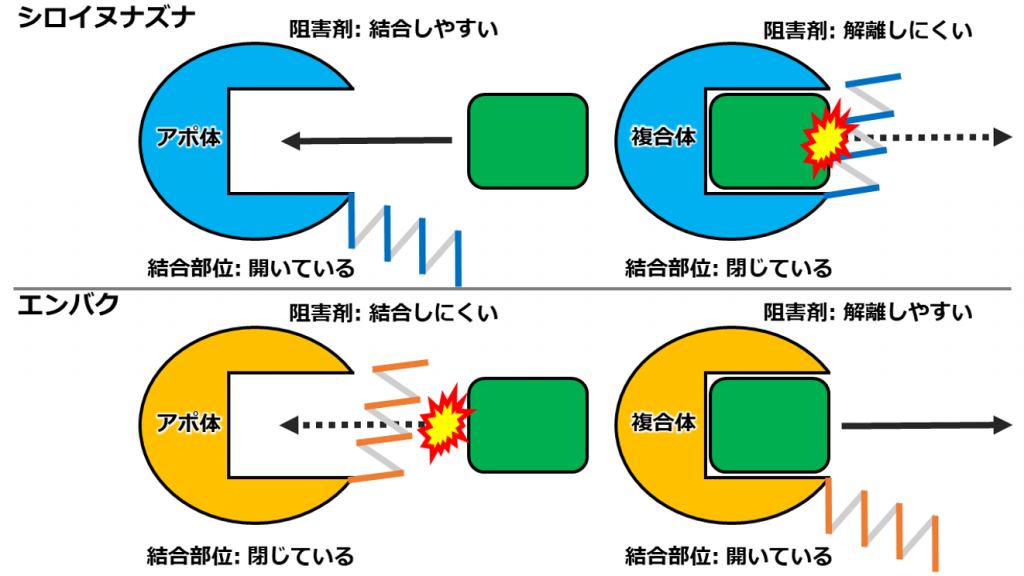
注1)PaCS-MD:短時間MDの実施と構造変化を引き起こす可能性の高い状態の選択とを繰り返すことで、効率よくタンパク質の構造変化を抽出する計算手法
注2)OFLOOD:短時間MDの実施と未知の状態(外れ値)の探索を繰り返すことで、効率的にタンパク質がとりえる構造を探索する計算手法
本研究は、生命金属科学(22H04800)、CREST自在配列(JPMJCR20B3)および筑波大学計算科学研究センター学際共同利用プログラムによって実施されました。
【題 名】 Determination of the Association between Mesotrione Sensitivity and Conformational Change of 4-Hydroxyphenylpyruvate Dioxygenase via Free-Energy Analyses
【著者名】 Yohei Munei, Kowit Hengphasatporn, Yuta Hori, Ryuhei Harada, Yasuteru Shigeta
【掲載誌】 Journal of Agricultural and Food Chemistry
【掲載日】 2023年6月5日
【DOI】 DOI: 10.1021/acs.jafc.3c01253
(https://pubs.acs.org/doi/10.1021/acs.jafc.3c01253)
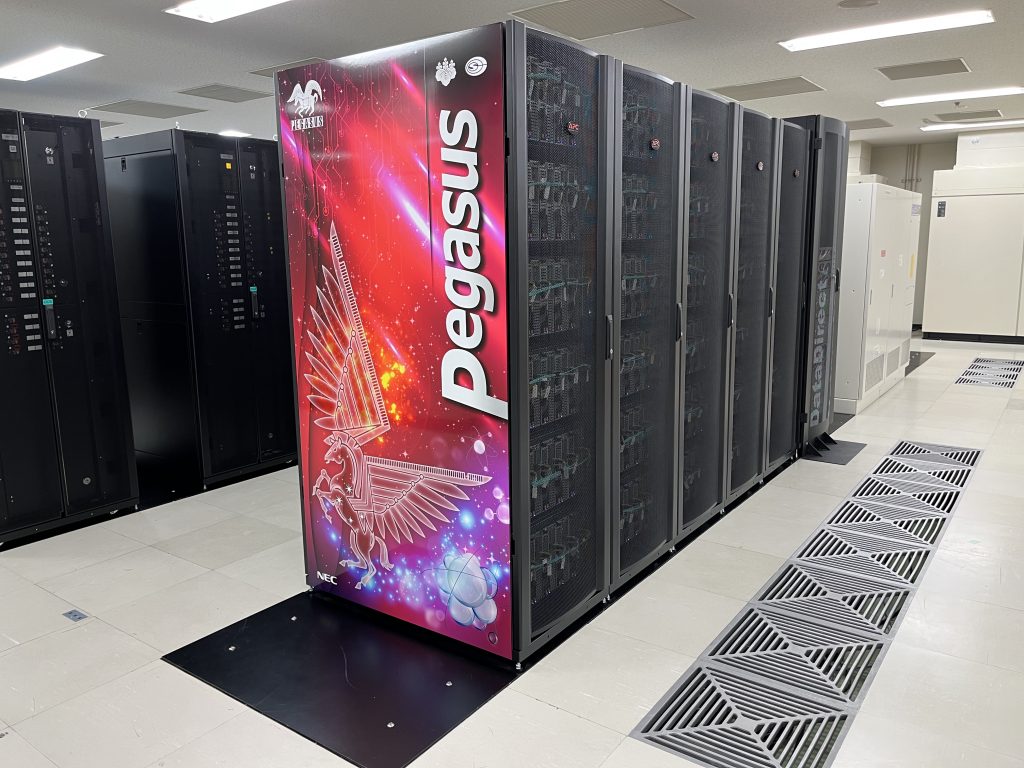
2023年5月に公開されたIO500リストで、 Pegasus で実行した CHFS が10ノードチャレンジで21位となりました。
https://io500.org/list/isc23/ten
また、全体リストにおいても 28位となり、これまで国内首位であったJCAHPC の Oakforest-PACS の IME の性能を超えて、国内のファイルシステムとしては最高位となりました。
計算科学研究センター生命科学研究部門の庄司 光男助教が、量子生命科学会令和5年度学会賞(研究奨励賞)を受賞し、5月19日に授賞式が行われました。
受賞タイトル及び受賞理由は以下の通りです。
受賞タイトル「量子化学計算を活用した複雑酵素反応および生体分子ホモキラリティ機構の解明」
酵素に代表される生体構成分子の電子状態および分子物性における顕著な量子力学的選択性や反応性の理論的解明を目指して、主に量子古典混合計算法などに基づき、光合成光化学系、金属含有タンパク質、ホモキラル・アミノ酸前駆体等の特異な量子物性を明らかにした。
関連リンク:量子生命科学会 https://quliss.org/information
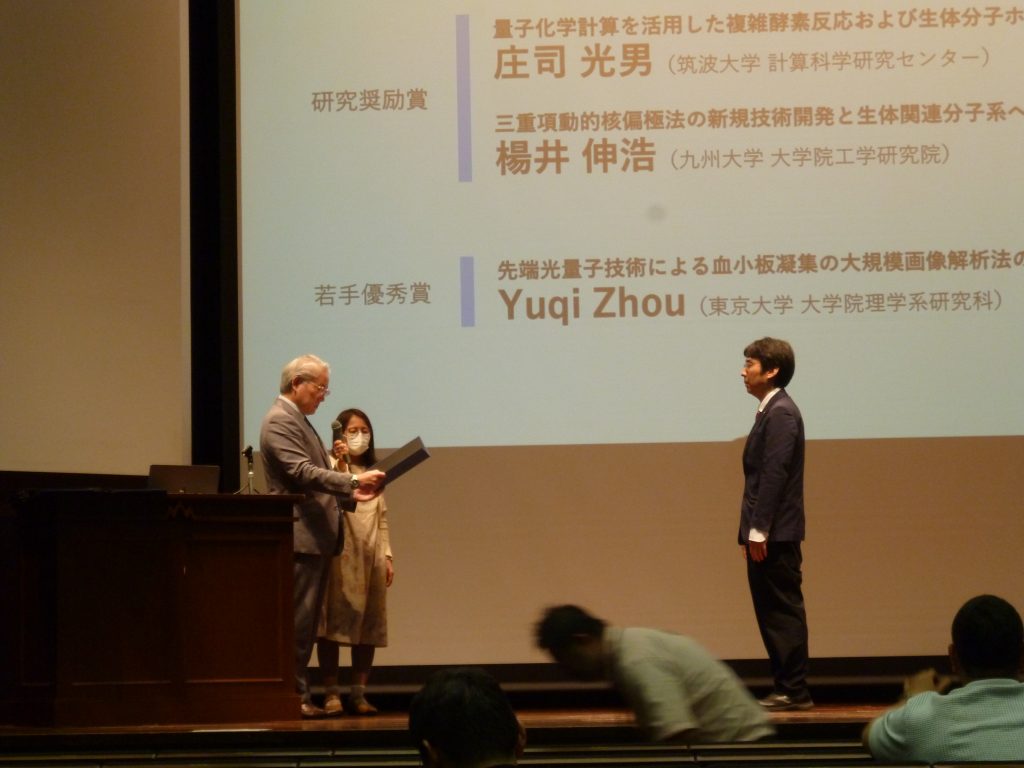
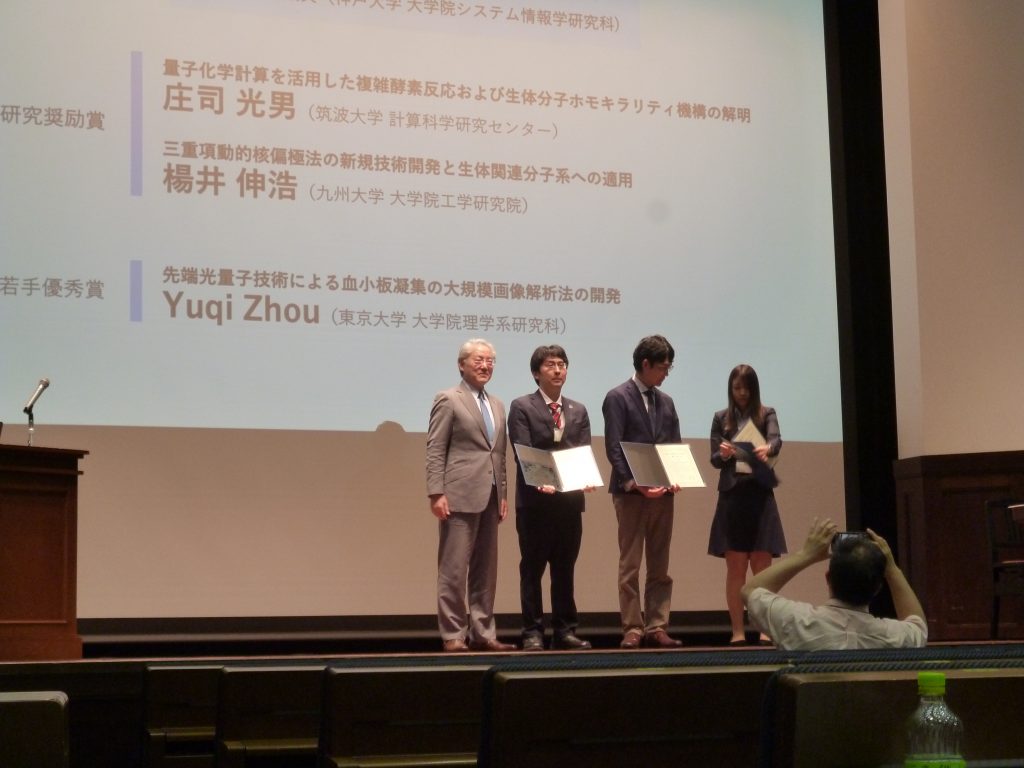
計算科学研究センターに在籍していた研究者らが中心となって開発したソフトウェア「SALMON(Scalable Ab-initio Light-Matter simulator for Optics and Nanoscience; https://salmon-tddft.jp/)」が、HPCIソフトウェア賞開発部門賞において奨励賞を受賞し、令和5年5月19日(金)に授賞式(オンライン)が行われました。
この賞は、一般社団法人HPCIコンソーシアム(https://www.hpci-office.jp/)が、大規模計算などの計算科学分野の発展に貢献したソフトウェアのうち特に有益と認められたソフトウェアの開発者・団体、あるいは普及に貢献した者・団体を奨励することを目的に設立したものです。
本賞は開発者の中でも40歳以下の若手が対象となるもので、センターからは佐藤 駿丞助教が受賞しました。
ISC2023 will be held on May 21-25, 2023 in Hamburg, Germany and Online.
Please stop by our booth #C308, “CCS/JCAHPC, University of Tsukuba”.
See below for detailed information.
ISC2023: https://www.isc-hpc.com/
Prof. Masayuki Umemura (formerly of the Department of Astrophysics) and Prof. Hiroshi L. Tanaka (formerly of the Department of Environmental Science), who retired in March 2023, have been named Professor Emeritus of the University of Tsukuba.
Professor Emeritus Umemura (left) and Professor Emeritus Tanaka (right).